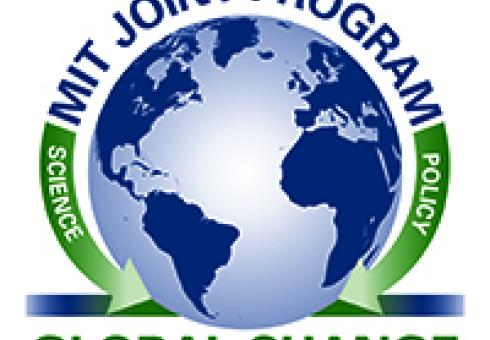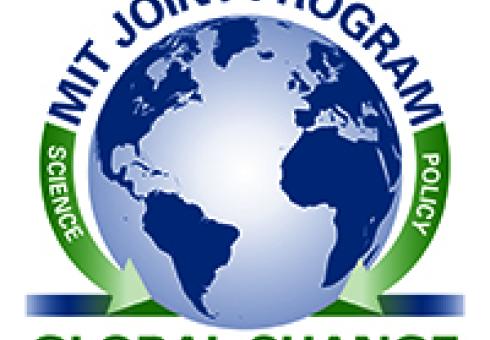
SOURCE: AP
Shale gas has transformed the U.S. energy landscape in the past several years—but it may crowd out renewable energy and other ways of cutting greenhouse gas (GHG) emissions, a new study warns.
A team of researchers at Massachusetts Institute of Technology used economic modeling to show that new abundant natural gas is likely to have a far more complex impact on the energy scene than is generally assumed. If climate policy continues to play out in the United States with a relatively weak set of measures to control emissions, the new gas source will lead to lower gas and electricity prices, and total energy use will be higher in 2050.
Absent the shale supply, the United States could have expected to see GHG emissions 2 percent below 2005 levels by 2050 under this relatively weak policy. But the lower gas prices under the current shale gas outlook will stimulate economic growth, leading GHG emissions to increase by 13 percent over 2005. And the shale gas will retard the growth of renewable energy's share of electricity, and push off the development of carbon capture and storage technology, needed to meet more ambitious policy targets, by as long as two decades.
"Shale gas is a great advantage to the U.S. in the short term, for the next few decades," said MIT economist Henry Jacoby, lead author of the new study. "But it is so attractive that it threatens other energy sources we ultimately will need."
A New Resource
Shale gas relies on hydraulic fracturing, or fracking, to open up cracks in the rock layer deep underground. The high-volume water fracking, combined with horizontal drilling, allows abundant natural gas production from rock layers that had not yielded natural gas in economic volumes before.
In just five years, the supply from shale gas has soared to become a quarter of all U.S. natural gas production. If this production continues to expand, natural gas prices will remain relatively low for decades, and natural gas will take over more of the electricity market, according to the study's forecast, published in the inaugural issue of Economics of Energy and Environmental Policy. (The peer-reviewed semi-annual journal is a new venture of the International Association for Energy Economics.)
The study compared two different kinds of climate policies, and two different situations—with or without shale gas.
In the weak climate policy scenario that the researchers examined, the government would mandate that, by 2030, renewable energy such as wind and solar would grow to become 25 percent of the electricity market, and half of all coal power plants would be shut down.
In the strong climate policy case, greenhouse gas emissions would be required to shrink continually, dwindling to about half today's level by 2050, driven by a price on these emissions, either through a tax or market-based policy to cap emissions.
Either way, the presence of abundant shale gas would make it cheaper to meet the targets, the study found.
"The biggest effect is that it would push out coal," Jacoby said. This is a climate benefit, because natural gas generates electricity with roughly half the emissions of coal.
However, the expansion of shale gas would also put limits on the expansion of other sources of electricity, because natural gas power plants would tend to be cheaper than wind or solar.
In the strong policy scenario, the study forecasts that natural gas would take over about a third of the electricity market by 2050, completely driving out coal. In this case, renewable energy would increase as well, tripling between now and 2050—but this growth of renewables would be much slower than what the U.S. has seen in the past several years.
Low-cost gas would also hamper the development of carbon capture and storage (CCS), a way of keeping carbon dioxide, the primary greenhouse gas, from going up power plants' smokestacks, and instead storing it underground.
According to the study, if there were no shale gas, meeting the stronger policy target would first bring CCS into play around 2030, and then it would expand to become a crucial part of the electricity system. But with shale gas available, CCS is projected to be pushed back by up to two decades.
"In the long run, we need renewables, carbon capture and storage, and nuclear power," Jacoby said. "Shale gas is a good thing overall, but we've got to keep our eye on the long term,"—beyond 2050.
Cost, Technology Uncertainty
One reason that it is important to spur development of alternative energy and carbon capture is that there is a lot of uncertainty about the future of shale gas, said Jacoby, who co-authored a major MIT study last year on the subject.
"We're at the very early stage of this resource," Jacoby said. "It's a huge resource, but the main uncertainty is the cost."
That's in part because "we're just learning about the geology [of shale gas areas] and how wells will perform over time," Jacoby said.
New environmental regulations may also put restrictions on the industry, pushing up the cost of production. And as the prime reserves of shale gas are depleted, the gas from remaining reserves may be more expensive to produce.
On the other hand, there has been rapid technological improvement in fracking, Jacoby said, "so we'll get better and better at it," which could help keep the price down.
A Blessing or a Trap?
Physicist Ray Orbach, director of the Energy Institute at the University of Texas in Austin, agrees that shale gas in the coming years will be cheap and plentiful enough to drive out most other sources of electricity—including coal, nuclear, and renewables.
"It's a little hard to see how any other source can compete for the foreseeable future," Orbach said.
But Orbach, who oversaw federal research efforts as director of the Office of Science at the U.S. Department of Energy in the Bush administration, added, "I think it's a very healthy competition," since it will drive out coal, the dirtiest source of electricity, both in terms of greenhouse gases and smog. Rather than shale gas being a problem, he said, "it's a blessing."
However, James Bradbury, a policy analyst at the World Resources Institute, said energy policymakers face new challenges due to shale gas.
"Given current U.S. policies, abundant and relatively cheap natural gas puts all other energy sources at a competitive disadvantage," he said. "It is particularly important for decision-makers to . . . usher in more renewable energy by creating incentives to help this industry thrive," including policies to increase innovation and encourage investment in electric grids.
The infrastructure people build today—power plants fired by coal or natural gas, or solar panels or wind turbines—will likely last for decades, Bradbury said.
"The longer it takes for the [United States] to pass climate policy," he added, "the more likely it is that we will see . . . gas-related infrastructure become effectively locked in to our energy system for decades."
The MIT study noted that natural gas is often thought of as a "bridge" to a low-carbon future. But the study also emphasizes that there is also a risk of "stunting" other technologies for reducing carbon emissions. "While taking advantage of this gift in the short run, treating gas as a 'bridge' to a low-carbon future," the study said, "it is crucial not to allow the greater ease of the near-term task to erode efforts to prepare a landing at the other end of the bridge."




